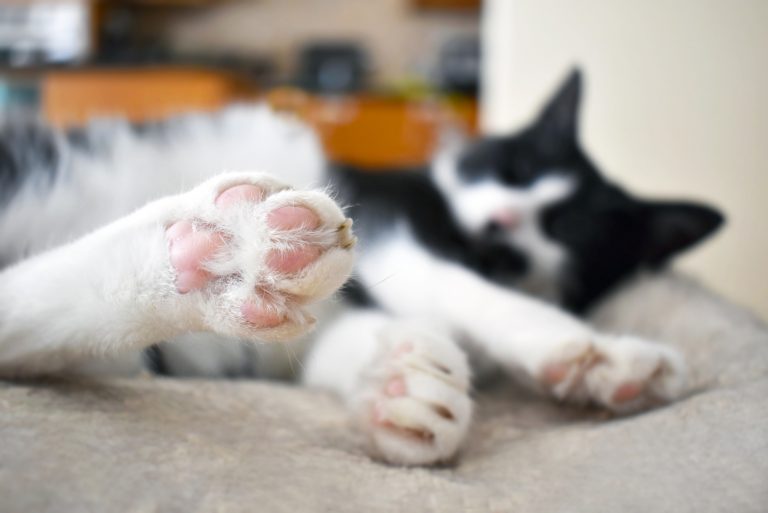What Is A Therapy Cat? The Amazing Healing Power Of Felines
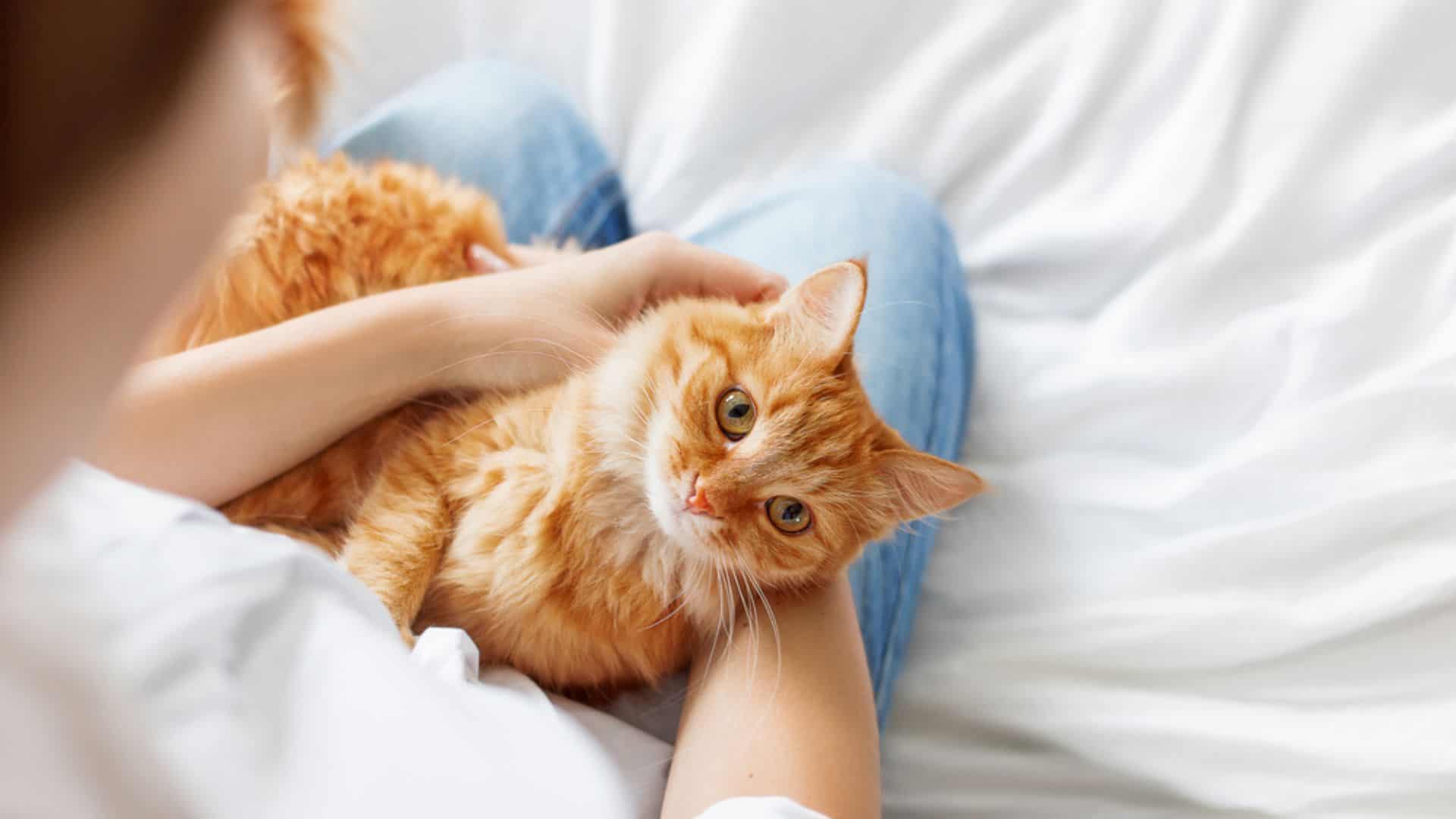
Many people will know what I’m talking about; you come home from a terrible day at work, your pet jumps into your lap as soon as you walk in, and suddenly, all your troubles don’t seem that awful.
The positive effect animals have on human mood is the basic idea of therapy animals, and cats have been used as therapy animals more and more in recent years. Having a purring furball nearby would make anyone’s day better, right?
In this article, I will explain how cats are used in animal-assisted therapy, what makes them good therapy animals, and how they help kids and grown-ups battle loneliness, lack of self-esteem, and depression.
What Is A Therapy Cat?
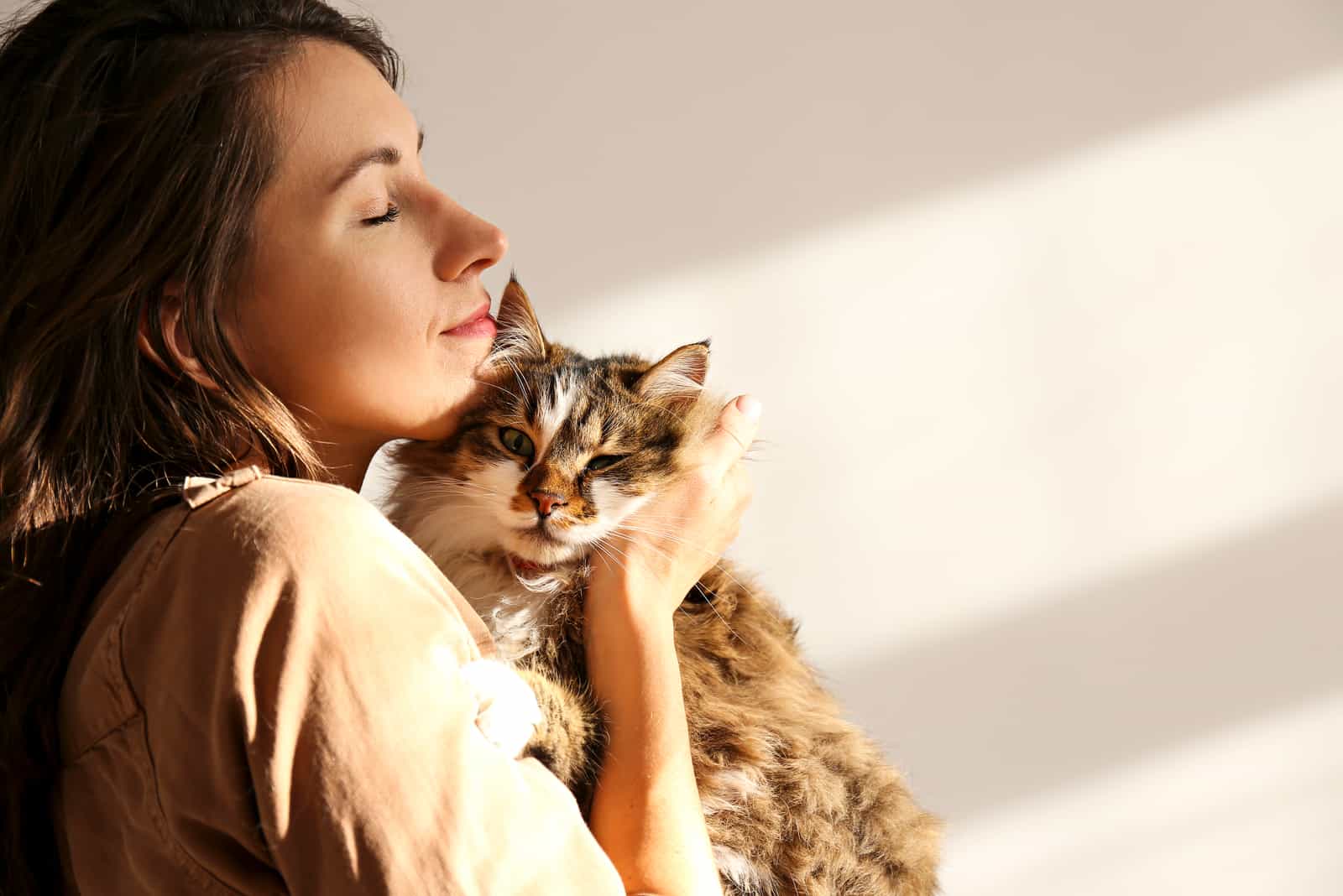
Many kids and grow-ups benefit hugely from human-animal interaction, as it helps them relax and feel better. Traditionally, dogs were used as therapy animals. However, cats have also proven to be fantastic therapy animals and have been gaining in popularity.
A therapy cat is a cat that has been specially taught to assist individuals who are suffering from emotional, mental, or physical discomfort. The goal is to improve human health and well-being.
A series of one-on-one sessions are often used to introduce therapy cats to patients to reduce anxiety and hasten the healing process. However, group sessions are beneficial as well, especially in retirement homes.
Not every cat can be a therapy cat. Therapy cats are specifically trained to perform their role efficiently. A therapy cat must be confident, friendly, and able to deal with unpredictable situations. I will talk more about this topic below in the article!
Whom Can Therapy Cats Help?
As I’ve mentioned, therapy cats help people help better, but which situations do they provide the greatest benefit for?
Therapy cats are commonly used in animal-assisted therapy for:
🐾 people in retirement homes
🐾 people in nursing homes
🐾 people in hospices
🐾 children in hospitals
🐾 children with developmental disorders
🐾 children in school
🐾 students in college
Children with developmental impairments like autism have benefited from using therapy cats to help them feel more at ease in their surroundings. Additionally, therapy cats visit schools, hospitals (especially children’s hospitals), speech and hearing clinics, and hospitals.
In nursing homes, where patients may appreciate some “fur time”, therapy cats are a huge help. Additionally, cats can frequently bring back good memories for some Alzheimer’s sufferers.
People that are not patients of a human care facility can also gain benefits from interacting with a therapy cat. People battling anxiety and depression have noted great benefits from interaction with a therapy cat.
What Exactly Is Animal-Assisted Therapy?
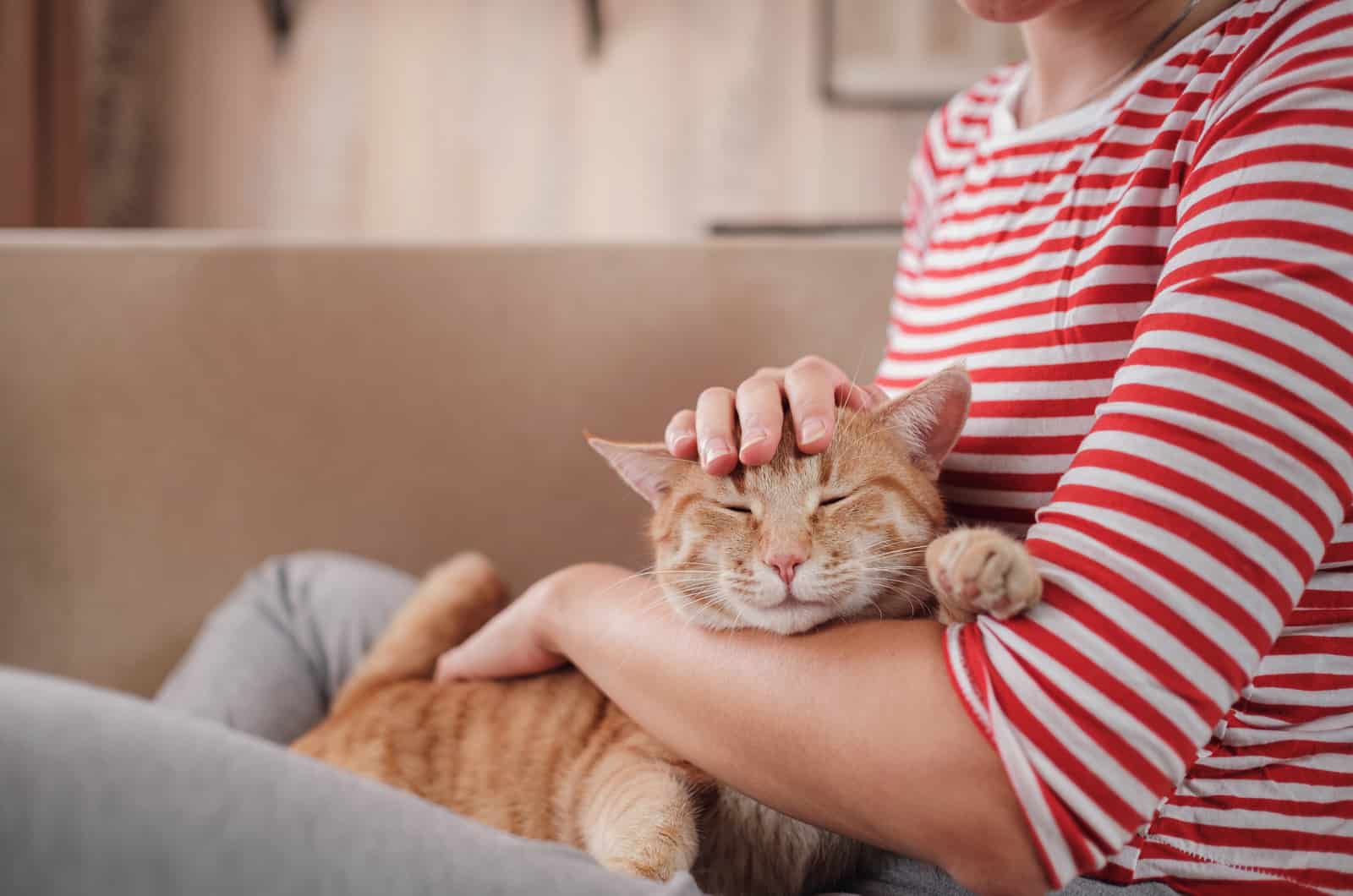
The use of specially trained animals to assist in the treatment of individuals suffering from various different conditions is known as animal-assisted therapy. The purpose of the therapy animal is to encourage improvement in human physical, social, emotional, and/or cognitive functioning.
Michael J. McCulloch, MD, co-founder of Pet Partners, an international organization dedicated to improving people’s lives using animal-assisted therapy, states:
“In an age of research when it is tempting to reduce emotions to biochemical reactions and to rely heavily on the technology of medicine, it is refreshing to find that a person’s health and well-being may be improved by prescribing contact with other living things.”
Animals may be a crucial part of therapeutic programs for anybody, from those suffering from the death of a loved one to those dealing with physical limitations following a vehicle accident.
What Makes A Good Therapy Cat?
Specific requirements must be met for cats to be selected as therapy animals. Let’s talk a bit about traits cats must have to be therapy cats.
1. Socialization
The goal of cat therapy is to bring comfort to people; hence the most important quality of therapy cats is that they should get along well with people. Therefore, teaching socialization is crucial in training a cat to become a therapy cat.
How Are Cats Socialized?
Early handling should help mold a cat’s personality. Kittens should interact well with people between the ages of 2 and 7 weeks, which is the key socializing phase.
Some cat owners train their kittens to become therapy cats by petting them often, accustoming them to sitting on laps, and taking them to public locations like parks and friends’ homes.
Introducing a cat to as many unfamiliar people and settings as possible is the simplest way to socialize them, and taking the cat outside your house can also be beneficial.
However, some people think that cats’ personalities are inborn. Either they possess the necessary skills, or they do not. If not, no amount of teaching will be able to alter their underlying nature.
2. Non-Reactivity
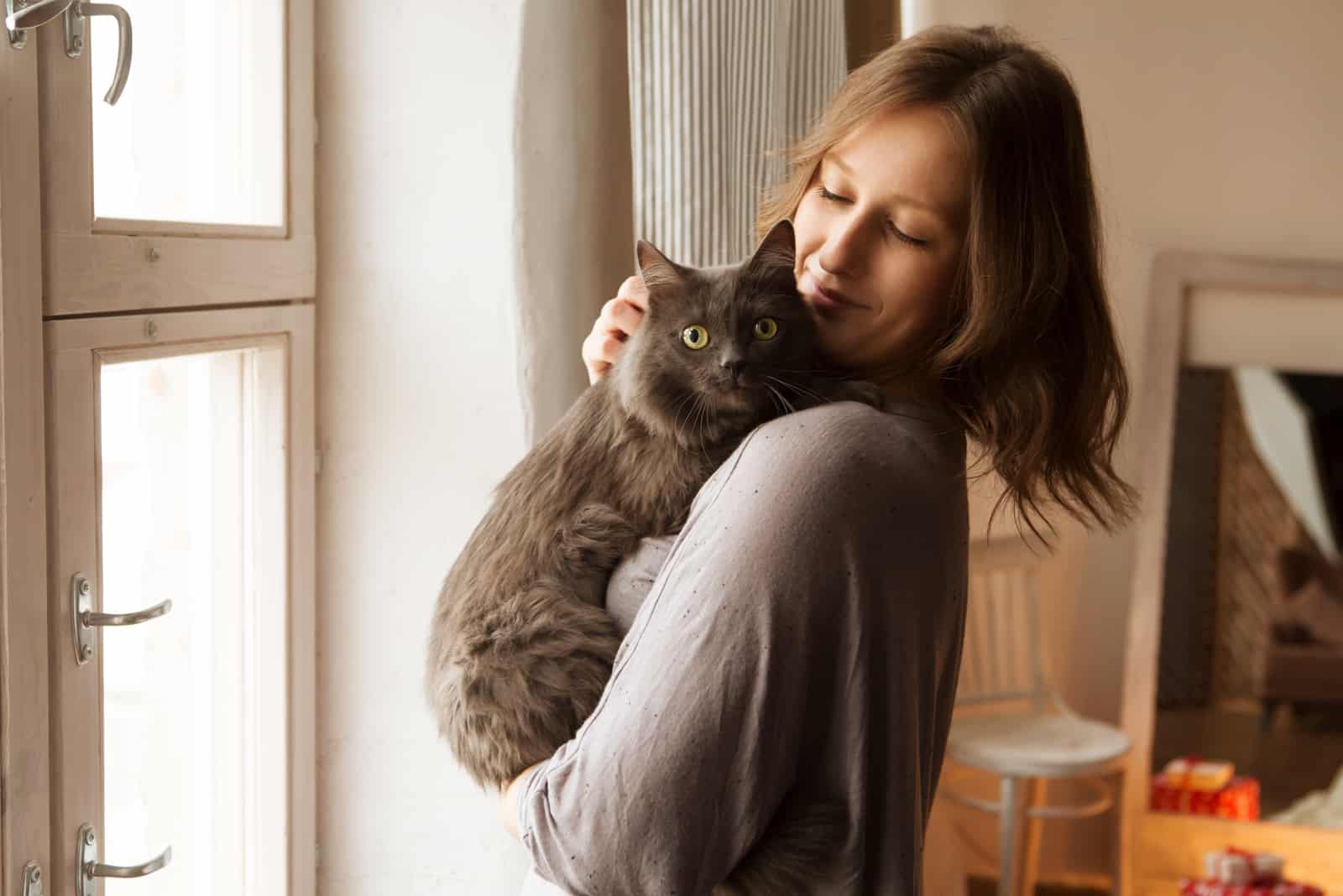
A cat may be trained to become acclimated to all kinds of odd situations, like keeping calm when security alarms go off and being less agitated while in public spaces and among many people.
It is important to introduce kittens to as many different sights, sounds, scents, and settings as possible.
Why Does This Matter?
If a cat becomes scared or anxious in a therapy session, the session will need to be cut short, as the cat can become less tolerant of being touched and held, which beats the purpose of the therapy.
Retirement homes, hospices, schools, and libraries are just a few places where therapy cats may visit. In these locations, among other stimuli, there may be elevators, wheelchairs, pencil case unzipping, book carts being rolled, etc.
Therapy cats are regularly handled and held by different individuals; therefore, they must always be extremely calm and patient towards people, dogs, and other animals.
They must also be able to quickly adjust to the sights, smells, and sounds of the hospital or home environment, including wheelchairs and unexpected noises.
3. Harness And Leash Training
Therapy pet programs require a cat to tolerate a harness and leash, so the ideal training is harness and leash training.
While it can be challenging to get a cat adjusted to walking with a harness and a leash, it’s not impossible; patience and persistence are required. They may only begin the rehabilitation program after they are entirely at ease with the collar and leash.
How Important Is This?
It’s not common for a therapy cat to have visitors, but rather for a therapy cat to be the visitor.
That means therapy cats travel a lot to their destinations, such as retirement homes and hospitals. Of course, a cat has to handle the drive and the location change well without experiencing anxiety.
Considering therapy cats have to “walk to their destination”, it’s important that they feel comfortable walking on a leash. Having a leash is a convenient way to control the cat’s movements.
4. Being Nicely Groomed
The care and upkeep needed to maintain pets’ health are referred to as cat husbandry. It specifically includes washing, grooming fur, as well as cleaning the eyes, ears, and teeth.
One of the requirements for a therapy cat is that it needs to be used to and comfortable with routine care.
Clean ears and eyes, fresh breath, and well-groomed fur are all requirements for therapy pets. Within 24 hours after the visit, they must take a bath and maintain cleanliness.
Each time a therapy cat has a visit, for example, in a nursing home, the cat’s fur and paws have to be clean and nails cut. The latter is crucial because cats jump from objects like people’s laps using their rear claws. The length of the nail should be kept safe so that it is neither sharp nor hooked.
Cats can be sponge bathed with water, cleaning wipes, or dry shampoo.
How To Get In Contact With A Therapy Cat?

If you’re interested in having cat-assisted therapy, you should look into animal therapy organizations near you.
One drawback is that few of these organizations exist, especially in smaller cities. However, considering how helpful therapy cats can be, it’s worth going through a little bit of trouble to find an organization that can help you.
Apart from visiting facilities where therapy cats are appointed, you can teach your cat to become a trained therapy animal.
It takes time and money to train a domestic cat or a cat needing rescue to become a therapy cat. However, the advantages a therapy cat has on the people it interacts with make the effort worthwhile.
Remember that a more even-tempered, youthful cat will probably adapt to the training more easily than a more energetic, rowdy one.
Your Cat Can Become A Therapy Cat

Therapy cats are usually not owned by an animal-therapy organization but rather cats with a home and an owner. Their owners have decided to serve their community by having their pets be part of a program that aids humans in need.
To get their position, therapy cats must undergo training and receive certification. Several organizations support the certification and training of therapy animals, including cats.
You and your therapy cat may benefit others if your cat receives some training. It’s important to note that the success of training greatly depends on the cat’s personality.
For example, some cats prefer not to be touched too much, which might be an issue, considering the most significant part of cat therapy is people petting the therapy cats. Therefore, you can engage your cat in training only if you know your cat has the personality that will make it an excellent therapy cat.
What Does The Process Look Like?
🐾 You will most likely be asked to complete a screening questionnaire first. The training program can begin if the organization has determined that you and your cat fit the requirements.
🐾 A cat must first visit a veterinarian to ensure all vaccinations are up to date before enrolling in an animal-assisted Therapy program. If the cat is physically fit, training will begin.
🐾 Typical training regimens include exposure to loud noises, crowds, and regular handling.
🐾 Following this training, a cat is accompanied by an animal-assisted therapist to the facility, where the cat’s ability to be a therapy cat is demonstrated in person.
🐾 When it’s observed that the cat meets specific requirements, it is ready to offer unconditional love and assistance to someone in need.
🐾 After submitting the necessary paperwork and a fee (which varies by organization), your cat can become a part of a certified therapy team.
The therapy cat training program can take some time; it’s not done in a week or two. Dedication and time from both the pet and the pet parent are needed.
What Makes Cats Good Therapy Animals?
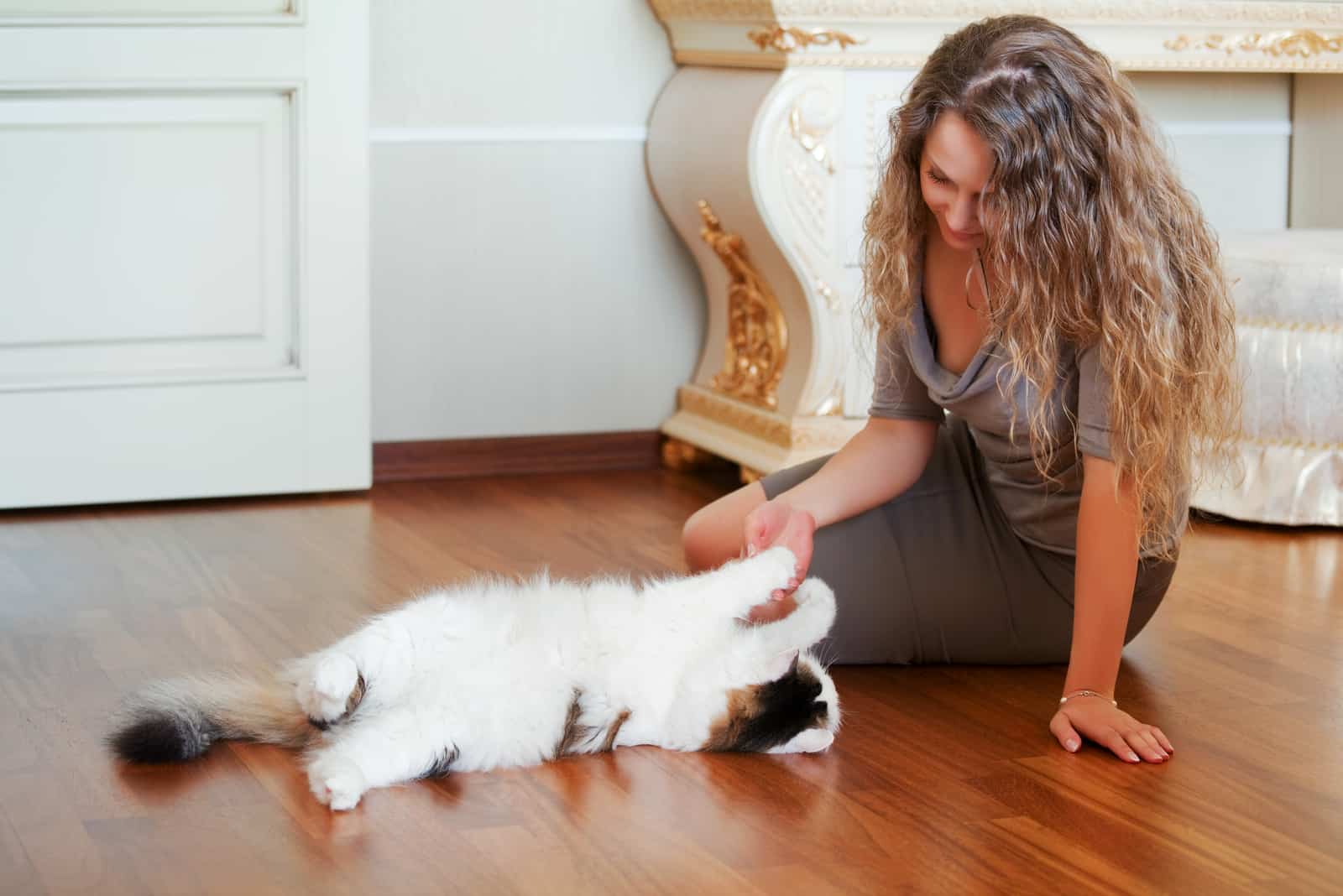
Not many animals are used as therapy animals; the three most common therapy animals are dogs, horses, and cats. So, what makes cats good therapy animals?
🐾 They can be trained.
🐾 Many cats can read people’s emotions and act accordingly.
🐾 Many people find the soft purrs to be incredibly calming.
🐾 Some cats’ quiet demeanors might help owners who are stressed or anxious feel more at ease.
🐾 Some cats are extremely friendly and enjoy playing.
🐾 Depending on who they’re helping, some cats may be both energetic and calm.
🐾 The upkeep may be simpler than dog ownership because of their inherent instincts for self-grooming and use of litter boxes.
🐾 Due to their size, they’re easily taken to places they need to visit, such as different human care facilities.
Which Cat Breeds Make The Best Therapy Cats?
Many different breeds of cats make wonderful therapy cats. No cat breed is considered “the best therapy cat breed”. The most important thing is that the cat’s personality is even-tempered and it has received proper training.
This is not to say that the cat’s breed has no influence on its personality; however, cat breed is never the deciding factor when it comes to training therapy cats. In fact, many therapy cats are mixed-breed cats.
Therapy Cat Vs. Emotional Support Cat: What’s The Difference?
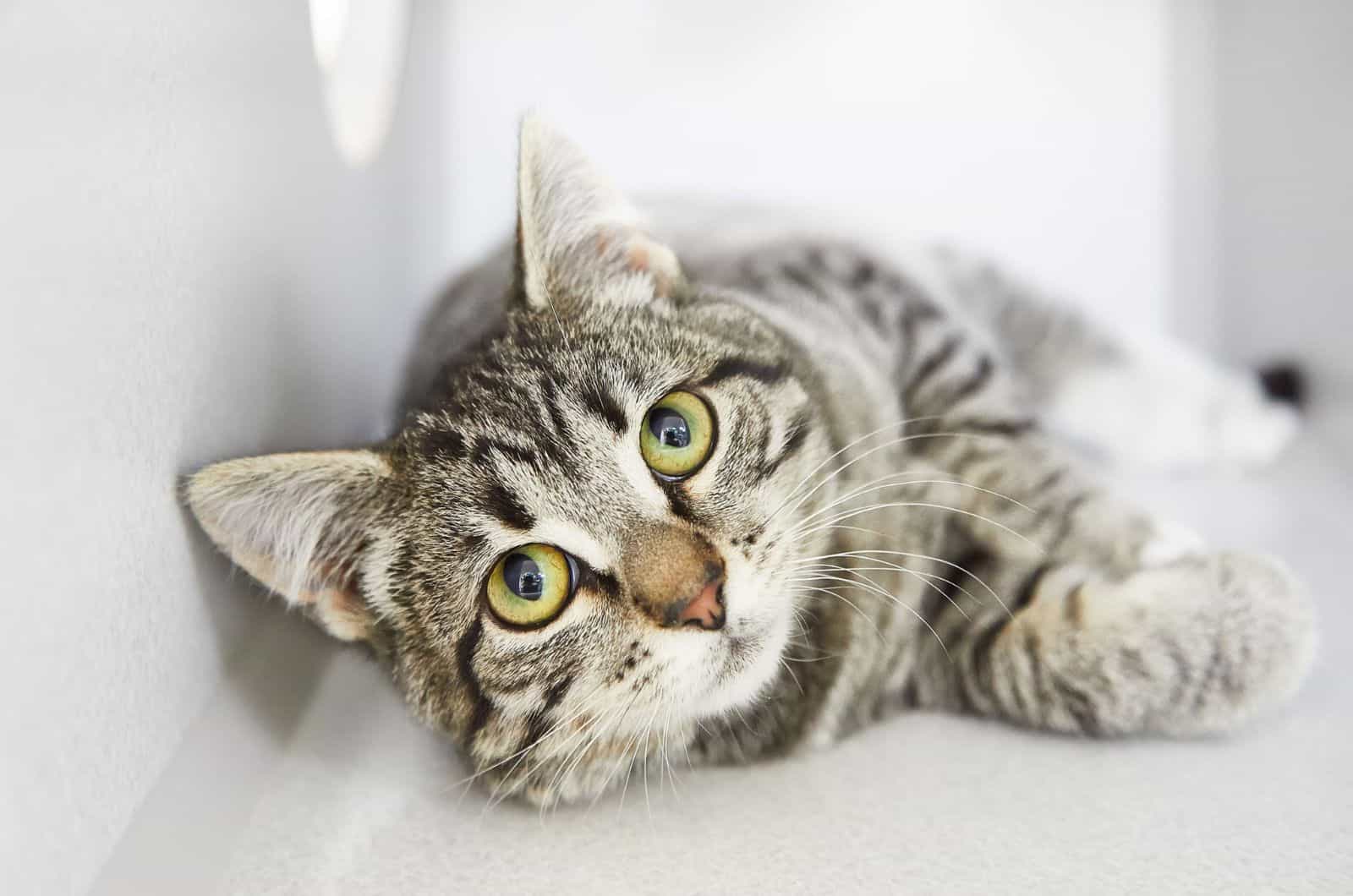
You might have heard the term emotional support animal or emotional support cat. Although it makes sense to think that an emotional support cat is the same as a therapy cat, that’s not the case.
What’s An Emotional Support Cat?
An emotional support cat is a companion that, by offering solace in their presence, assists their owners in overcoming the difficulties brought on by emotional and mental health issues (such as depression and anxiety).
Emotional support animals are not required to follow any behavior or training guidelines, unlike service and therapy cats, nor are they expected to carry out any duties specifically related to their owner’s illness.
It is believed that just having them around offers their owner comfort and therapeutic benefits.
Therapy Cat Vs. Emotional Support Cat
The main differences between a therapy cat and an emotional support cat are observed in the presence/lack of training and the type of people they help.
Is The Cat Trained Or Not?
Therapy cats receive training, while emotional support animals need no training.
A therapy animal has been specially trained to perform therapeutic tasks, such as offering comfort and companionship. They have succeeded in a test that especially looks for abilities needed to perform well in therapeutic settings.
Who Does The Animal Help?
While an emotional support cat may only help his owner, a therapy cat is prepared to visit public locations and help a wide range of people.
Therapy cats are purposefully brought to schools, nursing homes, and hospitals to help people.
An emotional support animal hasn’t been taught expressly to interact with people; instead, it offers its owners some kind of therapeutic benefit, like companionship.
A Therapy Cat Vs. A Therapy Dog: Which One Is Better?

I’ve mentioned that, for a long time, therapy dogs were the only ones used in animal-assisted therapy. However, people have observed that cats can have the same effect on people as dogs do. After all, they’re both able to interact with people nicely and cause the same “feel good” effect.
So, you might wonder which is better; a therapy cat or a therapy dog?
There is no right answer, as cats and dogs can be trained to become amazing therapy animals. Generally, dogs are a bit more easily trained, but cats are not far behind!
Some people like dogs more, while others like cats more. If you’re a cat person, therapy cats might be a better option for you; and if you prefer dogs more, therapy dogs are a great choice. At the end of the day, it depends on what the person in need prefers.
Six-Year-Old Iris And Her Cat Thula
If you’re reluctant to believe that cats can be great therapeutic companion animals, I believe this story can change your mind.
Iris is a six-year-old girl with autism, and she and her family have a beautiful Maine Coon cat named Thula. They do everything together and Thula even helped Iris overcome her fear of water!
Check out this video to hear the full story!
FAQ
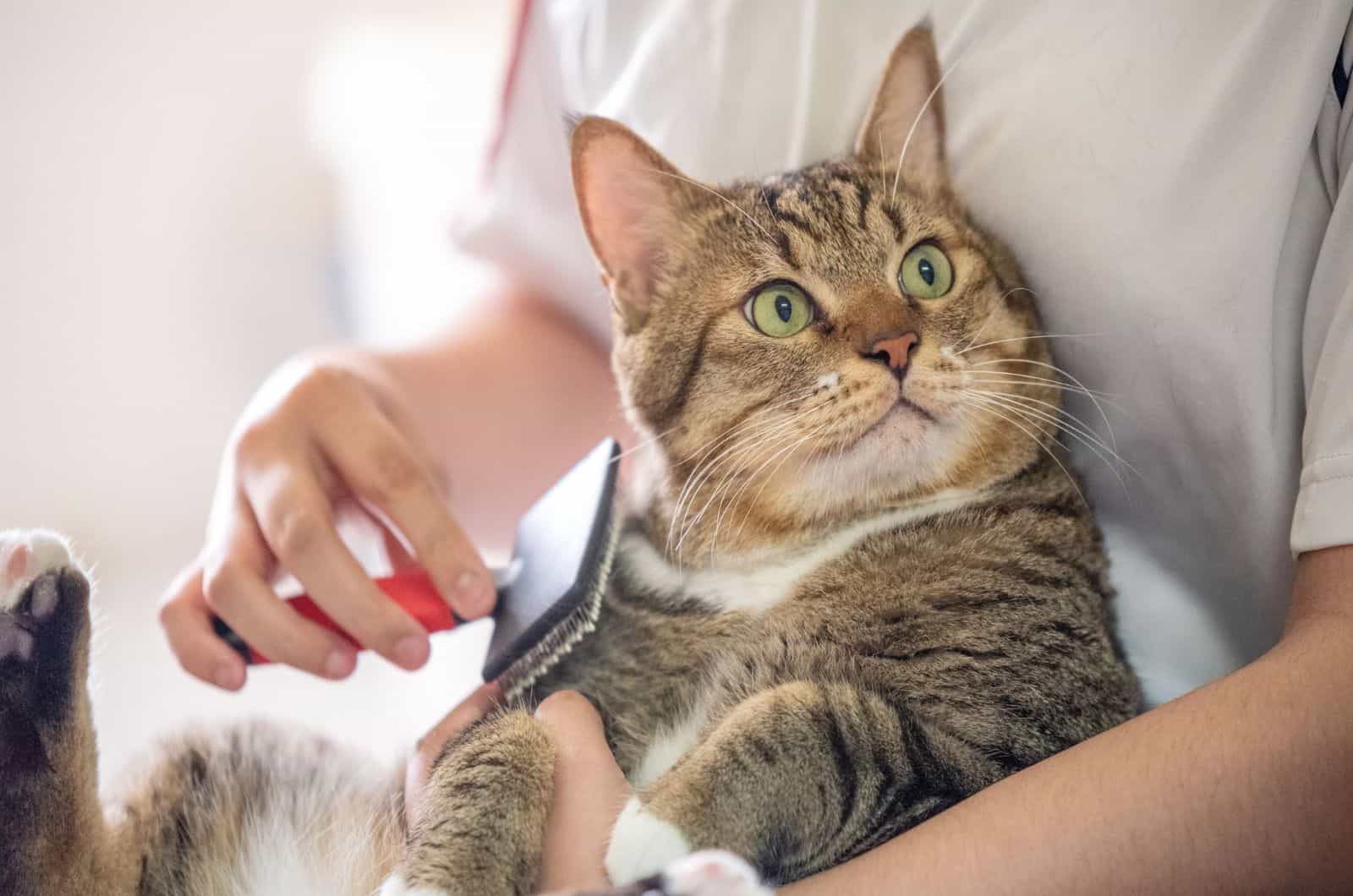
Do Therapy Cats Work?
For many people, animal-assisted therapy that includes a therapy cat works amazingly! Of course, it depends on whether the person actually likes cats and enjoys petting them.
Therapy cats have had a great deal of success in retirement and nursing homes, as well as working with children and grown-ups with various forms of disability. Therapy cats can also help people struggling with anxiety, depression, or any form of mental and emotional difficulties.
A growing number of organizations arrange training programs for future therapy cats and organize visits of the cat to various institutions, such as those mentioned above.
Can My Cat Be A Therapy Cat?
If you think your cat’s fit to be a therapy cat, then your cat can become a therapy cat. For a cat to become a therapy cat, it has to go to training, and if the training is successful and the cat has proven it’s great in a real-life environment, then your cat can officially become a therapy cat.
However, if your cat is highly energetic, doesn’t like being touched, does not like being held on a leash, and does not adapt to new environments quickly, then your cat might not be the best option for a therapy cat, even with training.
Can A Cat Be A Therapy Cat For Anxiety?
Numerous studies have demonstrated that animals can aid in a person’s recovery, as they lessen anxiety and loneliness. One of those animals are cats, which have been employed as therapy animals more and more recently.
For many people, interaction with a cat calms them down and lowers their stress hormone levels.
In Conclusion
Animal-assisted therapy has proven to be effective for many people and has been used more and more recently, as it’s a very effective way to help children and grown-ups feel better immediately.
Apart from dogs and horses, therapy cats have become one of the most commonly used therapy animals. However, not every cat can be a therapy cat.
Therapy cats undergo training to ensure the cats can adapt to new environments quickly and handle being held by many different people. These cats frequently visit various human care facilities where people love petting them.
Sessions involving therapy cats have a great future, and hopefully, will be utilized more frequently!


